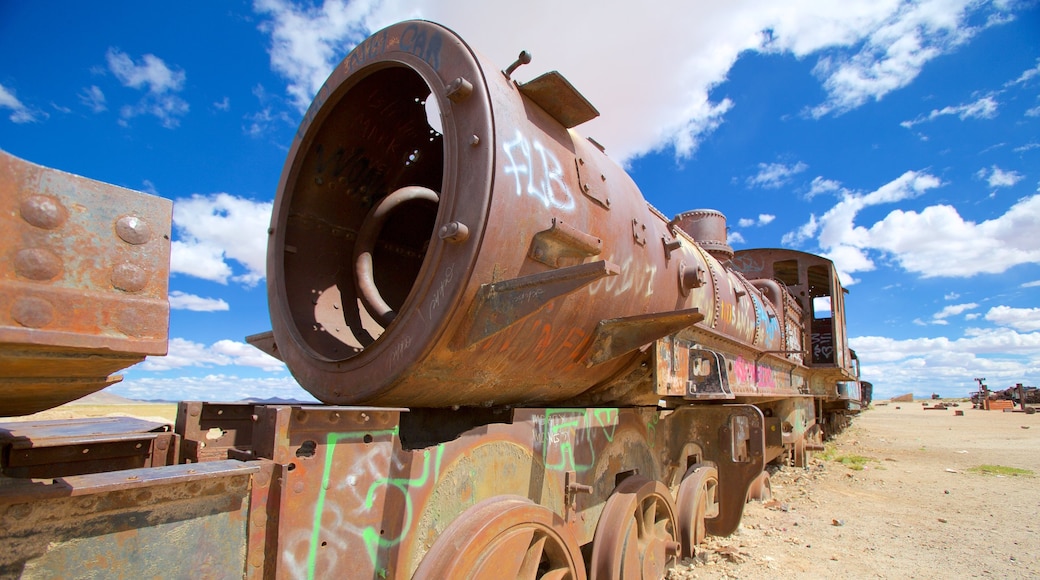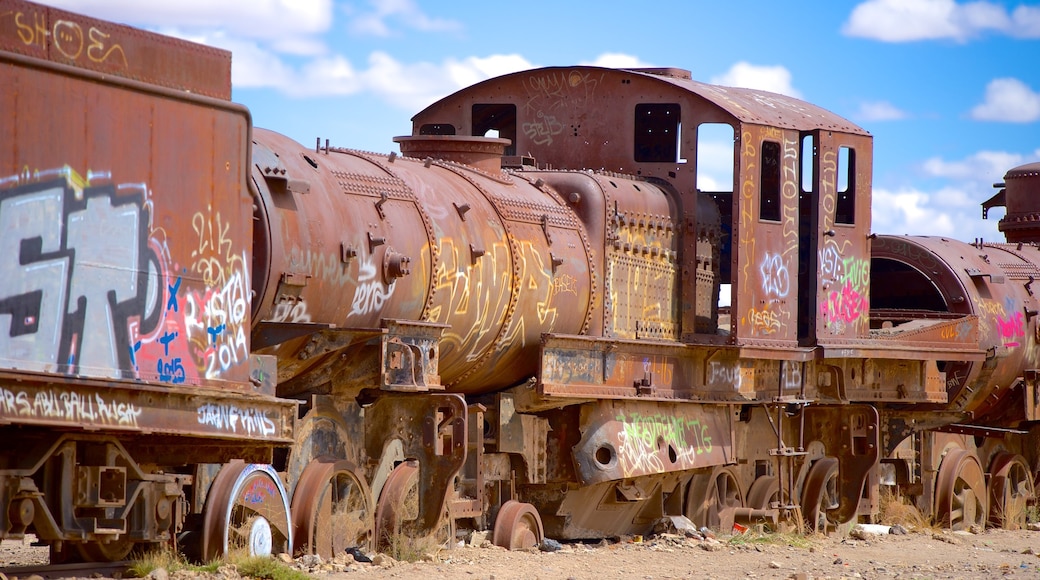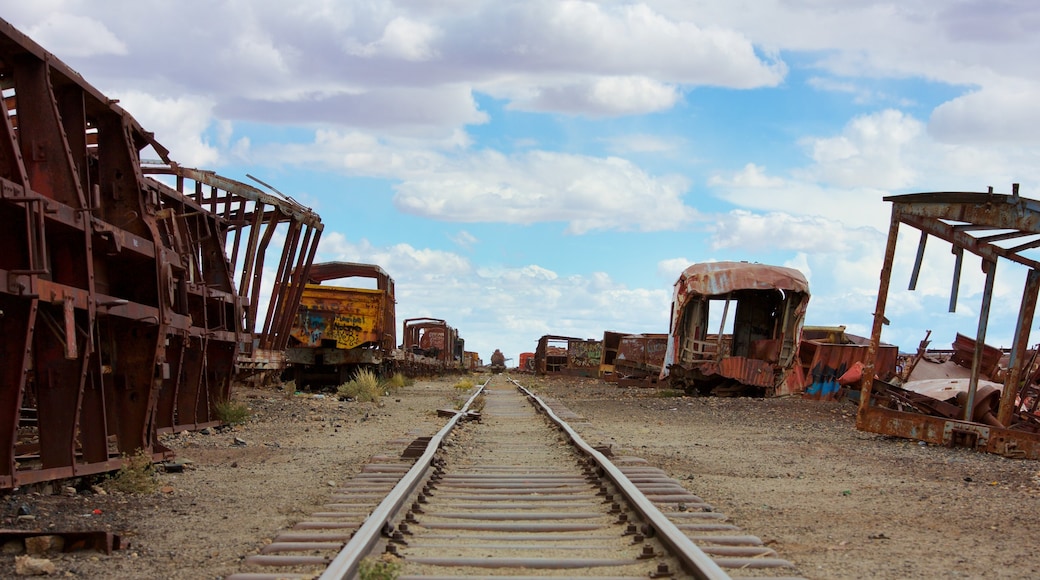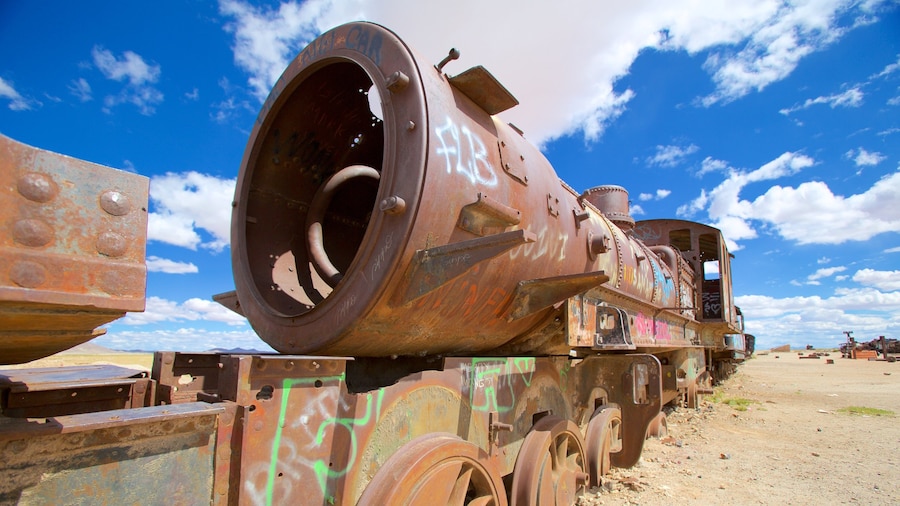A graveyard strewn with the remains of historic locomotives is one of the most striking and haunting sights in the deserts of southwest Bolivia.
In the town of Uyuni, on the edge of the world’s largest salt flats, discover the Train Cemetery. This curious landmark is the final resting place of several rusting engines and it tells part of the story of Uyuni’s history. Bring your camera for dramatic shots of these historic machines framed against the spectacular backdrop of the Bolivian salt desert.
Toward the end of the 19th century, British engineers and the Bolivia Railway Company planned to turn Uyuni into a transport hub for this corner of the country. A boom in mining brought significant industry to the area. Visit the Train Cemetery to see engines from the era that were abandoned here once those industries began to decline in the 1940s.
Walk among dozens of engines that have been subjected to decades of salt-heavy winds as well as deconstruction by opportunists looking to sell parts. The trains have still retained their original shape, making the engines a haunting tribute to a bygone era.
Some visitors climb on the trains for views of the surrounding desert and mountains. Take care, however, as not all of the structures are safe.
Step back from the cemetery for wide-angled photos of the surreal sight. The trains lie at the edge of Salar de Uyuni, a vast salt flat that turns into a shallow lake after rainfall. Take shots of the rusted-out engines against this mirror-like lake. Travel here in the wet season, November through April, for the highest chance of seeing this natural phenomenon.
Visit the Train Cemetery as part of a four-wheel drive tour out onto Salar de Uyuni. See hotels carved from salt and browse the museum in Colchani to see how the natural resource ends up as a table condiment.
The landmark is located directly south of the town of Uyuni, just a 20-minute walk from the modern train station. Explore the Train Cemetery, which has no entrance gate or security, for free and at any time of day. Come at sunset for the most impressive images of the trains.








